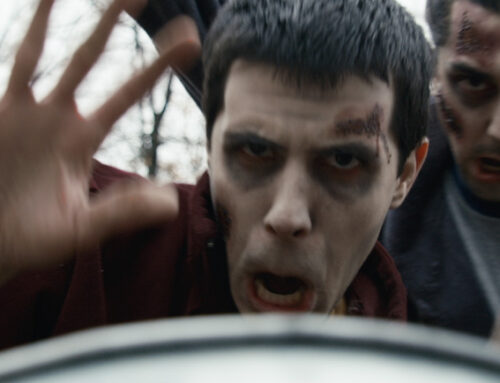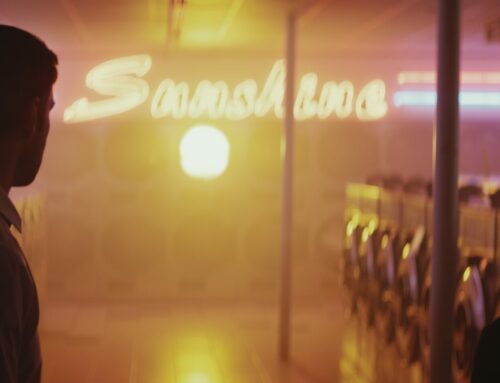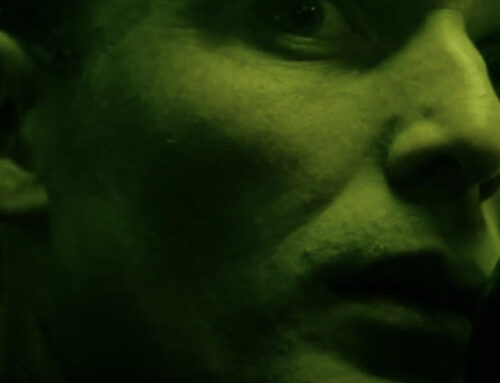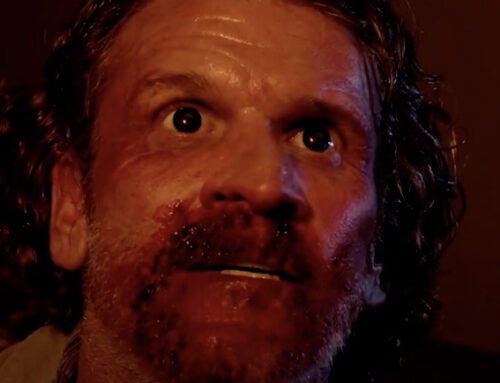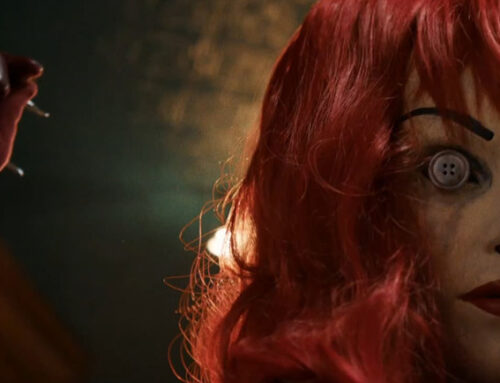Avant-garde both for its fresh visuals and for its innovative approach in retelling one of cinema’s favorite Shakespearean stories, director Stephen Rutterford’s film Finding Ophelia (2021) is an extreme case, and perfect example, of a film that shows without telling. There is very little dialogue used, and the film hardly gives the audience any verbal clues to the mystery that begins to unfold as the movie progresses, but its visual cues say a thousand words, and the music tells a thousand more.
I don’t quite know what I watched, that is, if Finding Ophelia can be boiled down to just one theme; the content seems to address everything from contemporary disconnectedness of relationships and the search for love, to the melancholy of existence, to biting satirical portrayals of mis-prioritized societal preoccupations. There are no mixed messages, only that writer/director Stephen Rutterford seems to have a lot to say and imbues every orifice of this film with meaning. I cannot immediately recall having ever seen an adaptation of Hamlet quite like Finding Ophelia before — I believe it is now my favorite, as the artistic liberties director Stephen Rutterford chooses make it more like a re-interpretation or rather something spritzed with the essence of Hamlet by use of an Ophelia type character — the maddened female love interest — and a protagonist in psychological turmoil over doubt.
Finding Ophelia stars Jimmy Levar in a breakout star performance as a man named William Edgar, a New York City artist who begins to have dreams about a woman he’s never met. With each new interaction, William’s dreams begin to feel so real that the woman begins to occupy his waking thoughts as well. After he finds the key to what may lead to solving the mystery of his dreamgirl’s identity, he falls deeper and deeper into this new cognitive connection to follow that clues, causing his dreams to blur with his reality and eventually turning both his waking and subconscious existences into a nightmare. William’s heart and dreams lead him to a psychiatric hospital, where he finds the answer to the tragedy that is Ophelia.
By cinematography, overblown footstep sounds, and framing, Finding Ophelia feels like a noir from Hollywood’s days of old, yet somehow, its heavily-laid on attitude from the movie’s concrete jungle setting screams hard-hitting urban drama to me; there are not many urban-noirs floating around, Finding Ophelia may just be paving a new style. The movie is undoubtedly visually striking, with lighting often casting long shadows across the faces of its characters and the streets paving its scenes. There was a lot of play with colors, they came off as harsh contrasts to shadows, reflecting the internal struggle of the protagonist. The coloring was not so much neon or psychedelic in nature, but still, with the poetic monologues and the disorienting cuts that gave a dreamy feeling to the movie, Finding Ophelia feels like a drug-induced mental trip.
Finding Ophelia is like having a cool and unexpected out-of-body experience, but one where you see so much freaky shite that you immediately want to return to the safety of the reality your body is rooted to. Like a dream within a dream that turns into a nightmare in its expression of lost-love angst, Finding Ophelia is aesthetically as artsy as arthouse films can get, however, the social commentary the film gives — such as its instances of portraying drug use/addiction– proves the film to be in touch with reality and accessible to all audiences, and more importantly, more entertaining than the frequently self-indulgent arthouse flick.
See Finding Ophelia on VOD streaming platforms beginning June 23rd.
MOVIE RATING — 7.5 out of 10
| Finding Ophelia | ||
| RATING: | R | |
| Runtime: | 1 Hr. 13 Mins. | |
| Directed By: | ||
| Written By: | ||


